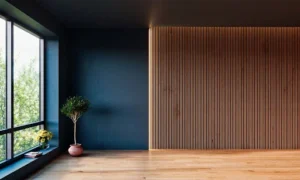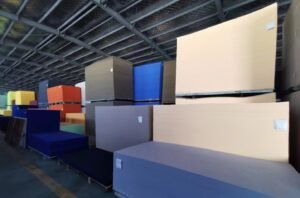Introduction: In the realm of office design, creating a harmonious and productive environment requires careful consideration of various factors, including acoustics. Sound absorbing panels have emerged as an essential element in office spaces, providing both functionality and aesthetic appeal. In this blog post, we will delve into the art of designing sound absorbing panels for office environments, exploring the key considerations and innovative approaches that enhance both form and function.
- Acoustic Performance: When designing sound absorbing panels for office spaces, the primary goal is to achieve optimal acoustic performance. The panels should effectively absorb and dampen sound waves, reducing noise levels and controlling reverberations. This requires careful selection of materials with high sound absorption coefficients and the strategic placement of the panels throughout the space to target areas of high sound reflection.
- Customization and Flexibility: Office layouts vary greatly, and each space has unique acoustic requirements. Designing sound absorbing panels that offer customization and flexibility is essential. Panels should be available in various sizes, shapes, and thicknesses, allowing for seamless integration into different office configurations. Additionally, customizable finishes and colors enable panels to blend harmoniously with existing interior designs, ensuring a cohesive and visually appealing workspace.
- Architectural Integration: Sound absorbing panels should be designed to seamlessly integrate into the architecture of the office space. The panels can be incorporated into walls, ceilings, or partitions, maintaining the overall design aesthetic while providing acoustic benefits. In some cases, innovative designs even allow for sound absorbing panels to double as decorative elements, turning them into focal points that enhance the visual appeal of the office.
- Sustainability and Environmental Considerations: In today’s environmentally conscious world, designing sound absorbing panels with sustainability in mind is crucial. Opting for eco-friendly materials and manufacturing processes not only aligns with corporate social responsibility but also appeals to environmentally conscious clients. Additionally, the use of recyclable or renewable materials contributes to reducing the carbon footprint of the office space.
- Integration of Technology: Advancements in technology have revolutionized the field of sound absorption. Designing panels that incorporate innovative technologies, such as micro-perforated surfaces or advanced sound-absorbing materials, can further enhance their performance. Additionally, integrating smart features that allow for sound control and monitoring can provide an interactive and adaptable acoustic environment for office occupants.
Conclusion: Designing sound absorbing panels for office spaces requires a thoughtful and multidimensional approach. By prioritizing acoustic performance, customization, architectural integration, sustainability, and technology integration, designers can create panels that not only effectively control noise levels but also elevate the overall office experience. The art of designing sound absorbing panels lies in striking the perfect balance between functionality and aesthetics, resulting in a harmonious and productive workspace.




